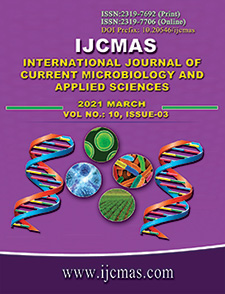


 National Academy of Agricultural Sciences (NAAS)
National Academy of Agricultural Sciences (NAAS)

|
PRINT ISSN : 2319-7692
Online ISSN : 2319-7706 Issues : 12 per year Publisher : Excellent Publishers Email : editorijcmas@gmail.com / submit@ijcmas.com Editor-in-chief: Dr.M.Prakash Index Copernicus ICV 2018: 95.39 NAAS RATING 2020: 5.38 |
Surgical site infections (SSI), is a commonest nosocomial infection leading to morbidity and mortality amongst hospitalized patients.For proper management of the patients it is very essential to identify pathogen and its antibiotic susceptibility. The aim of study was to identify aerobic bacterial pathogen isolates and detect antimicrobial susceptibility pattern. This was a prospective study carried out on 380 hospitalized patients, who had LSCS and complaint of discharge from operation site within 30 days of surgery from January to December 2020. Two swabs & discharge from operation site were taken by using sterile cotton swabs, culture sensitivity and antibiogram was done. In study time, out of 380 samples, in 234 (61.58%) aerobic pyogenic isolates were detected, GPC, GNB and Candida spp. in 156 (66.66%), 68 (29.05) and 1 (0.42%) case respectively. The predominant isolate among GPC were CONS 93 (59.6%) followed by S.aureus 60 (38.46%) and Enterococcus 3 (1.9%). In GNB most common isolates was Escherichia coli 31 (45.6%) followed by, Acinetobacter 14(20.6%), Klebsiella 11(16.18%), Citrobacter 7 (10.3%) and Pseudomonas 5(7.35%). Candida spp. was isolated in 1 case. Vancomycin (91.67%) and Linezolid (91.02%) showed maximum sensitivity among GPC isolates. While in GNB, Piperacillin tazobactum (94.11%) and Gentamycin (89.70%) showed maximum sensitivity. This study shows that Escherichia coli and S.aureus are the commonest pathogenic organisms associated with the surgical site infection. Isolation of CONS in high cases shows breach in asepsis protocols. Appropriate hand hygiene, strict infection control practice will reduce the rate of SSI, cost of treatment and mortality and morbidity of patients.
 |
 |
 |
 |
 |